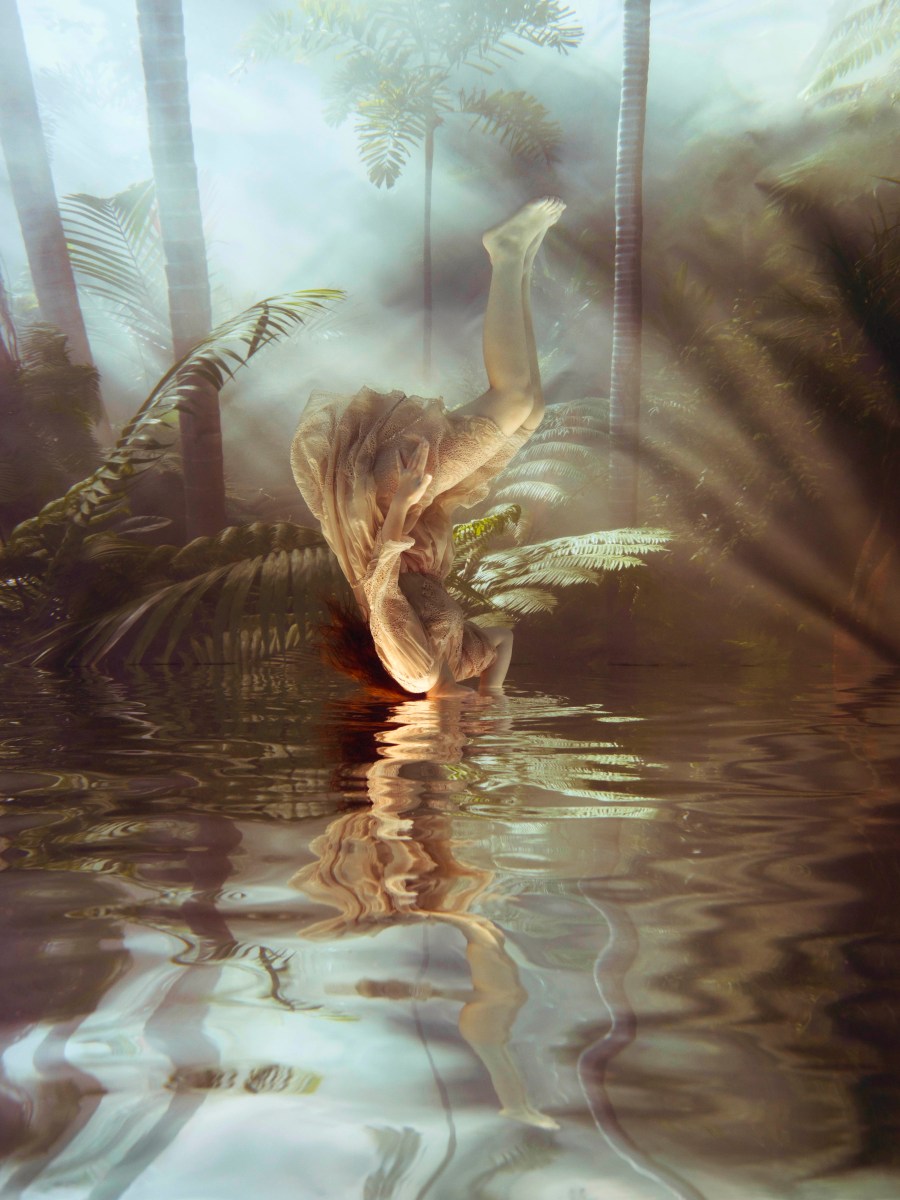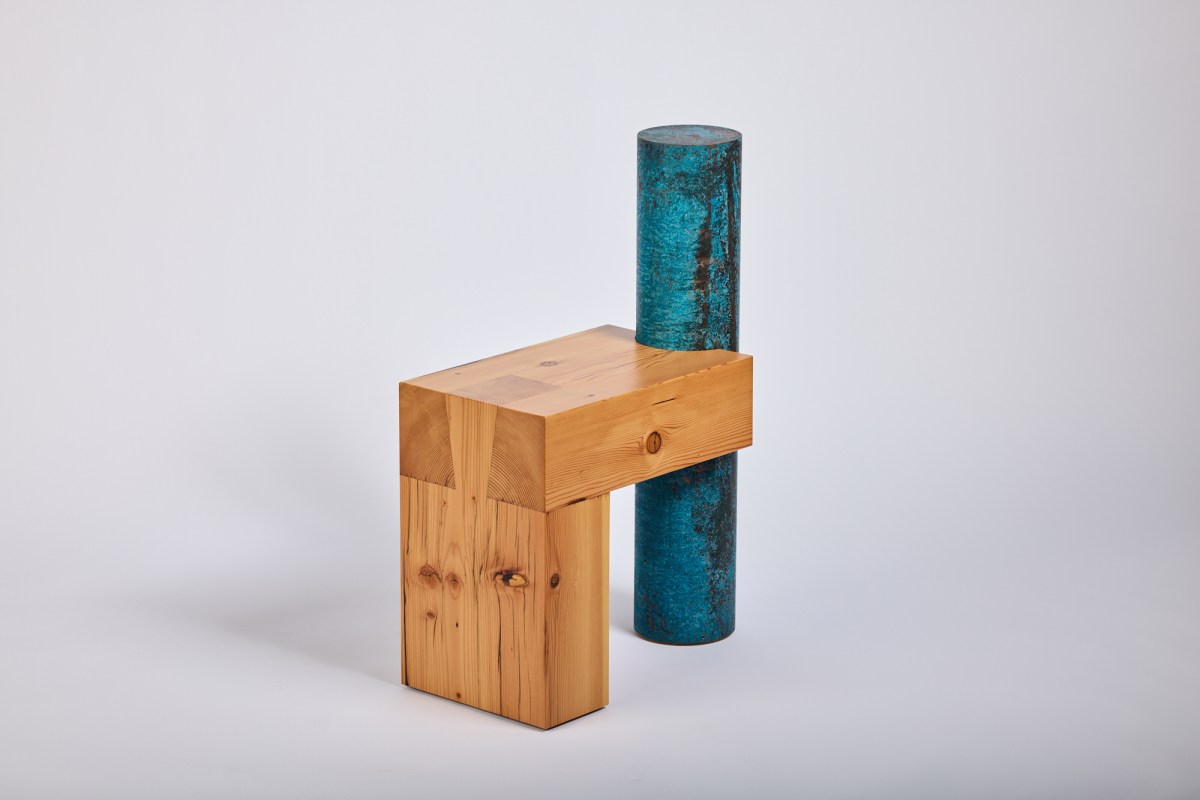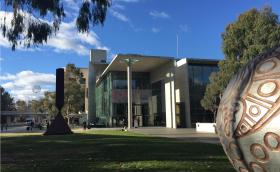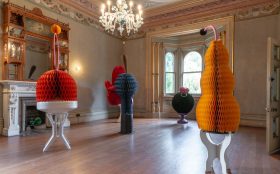“It’s such a pressing issue; it’s the biggest dilemma of our time – solving the environmental crisis,” says Elliot Bastianon. “I feel artists are obliged to comment on that in their practice. It can be in a very obvious way, or in ways that are more subtle.”
Last August, the Canberra-based artist and designer was the winner of the Design category of the annual Environmental Art and Design Prize for his Oregon Chair, constructed from a reclaimed Oregon timber beam and paired with a salvaged copper pipe.
The 2024 awards were only the fourth iteration of the prize, but it’s already become firmly established on the Australian art prize landscape, with past finalists including such luminaries of the creative sector as artists Angela Tiatia, Abdullah M I Syed, Anne Zahalka, and designers Michael Gittings and Alia Parker.
The annual prize exhibition is the flagship event of MAG&M’s Collective for Environmental Art and Design (CEAD), which explores the intersection between art, design and the environment.
Responding to the zeitgeist, the Prize is a celebration of contemporary creative practices that exhibit a deep commitment to the natural world and a positive, innovative and thought-provoking approach to the challenges facing our environment. In this, the Prize is a clear reflection of its host, Manly Art Gallery and Museum (MAG&M), an organisation that has had a long-established focus on sustainability, as well as a history of splendid art and design. It was these two strands that led to the launch of the Environmental Art and Design Prize in 2021, which is exhibited across MAG&M, as well as the Curl Curl Creative Space and Mona Vale Creative Space.

This year the Prize will be judged by artist Ramesh Mario Nithiyendran and Senior Curator, Powerhouse and Creative Director, Sydney Design Week Keinton Butler. And the finalists’ exhibition will be held in three venues: MAG&M, along with Curl Curl Creative Space and Mona Vale Creative Space.
“It’s prestigious,” says Bastianon. “Design prizes in this sphere aren’t particularly common, and for those that do exist, there usually isn’t a big cash prize.”
That’s clearly not the case with the Environmental Art and Design Prize – $20,000 is awarded to both of the winners of the two major prizes – Art and Design – but there are also a series of additional awards, including cash prizes for young artists and designers, and three cash prizes for the various People’s Choice awards. It all adds up to a grand total of $46,000.
But it wasn’t the financial rewards alone that enticed Bastianon to enter, he says. The nature of the prize really spoke to his practice. “I’ve always gravitated towards recycled or reclaimed materials, or ones that had an interesting past, ones that weren’t just virgin or sort of spat off a factory or a production line.”
You’ve got to be in it to win it
Bastianon is a veteran competition entrant, and he’s quick to recommend the habit for his peers. “Entering competitions like this is a very important thing. It’s great practice for rejection. You can’t be too thin-skinned about it, and get down in the dumps if you don’t win or you don’t make it to the finalists.
“Just getting your work out there, your ideas out there… sometimes you get feedback, but I find it’s great practice being able to write about your work in a very succinct way.
“What I liked about this competition was how little information was required. I think it was about 150 words about the work… whereas other competitions they want a page of text and it gets very convoluted.
“I couldn’t be more supportive of people applying for it. I think it’s a terrific competition,” he adds.
Bastianon has been a finalist in other prizes, but this was his first win. “It felt incredible to get there, it was very validating. It provided me with the encouragement that my idea was good and worth pursuing.”
The benefits have been manifold. Not only did the $20,000 allow him to purchase materials and equipment that are enabling a more ambitious development of his practice, and the time to spend on a solo show he is planning for later this year, but it was also useful for his gallerist, Simon Maidment at Useful Objects. “It’s good for Simon to use [the win] to discuss my work in a more critically engaged way with potential clients and collectors,” concludes Bastianon.
Key dates:
Call-out open: 19 March – 19 May 2025
Winners announced: Thursday 31 July, 6-8pm (exhibition opening)
Exhibition: Friday 1 August – Sunday 14 Sep 2025






